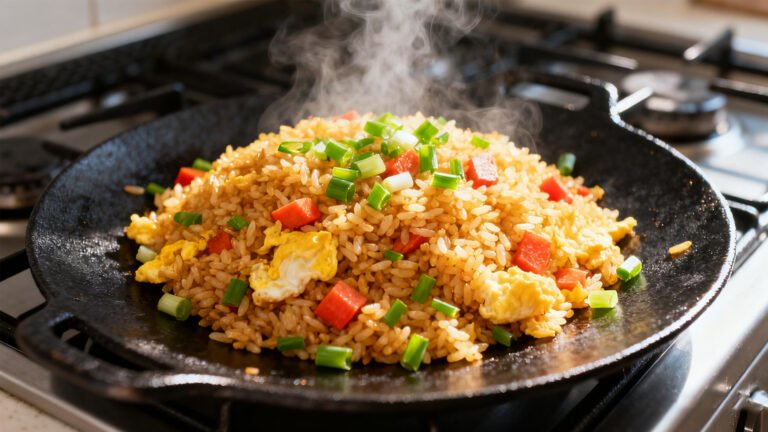
Contact Us through info@lovekonjac.com
Many people have tasted both oats and quinoa—but aside from differences in texture and appearance, how well do you really know them? Do you understand their nutritional value? Or how they impact your health? Let’s dive into the key differences between these two popular supergrains and discover why they’re the perfect partners for our konjac-based ready-to-eat rice meals.
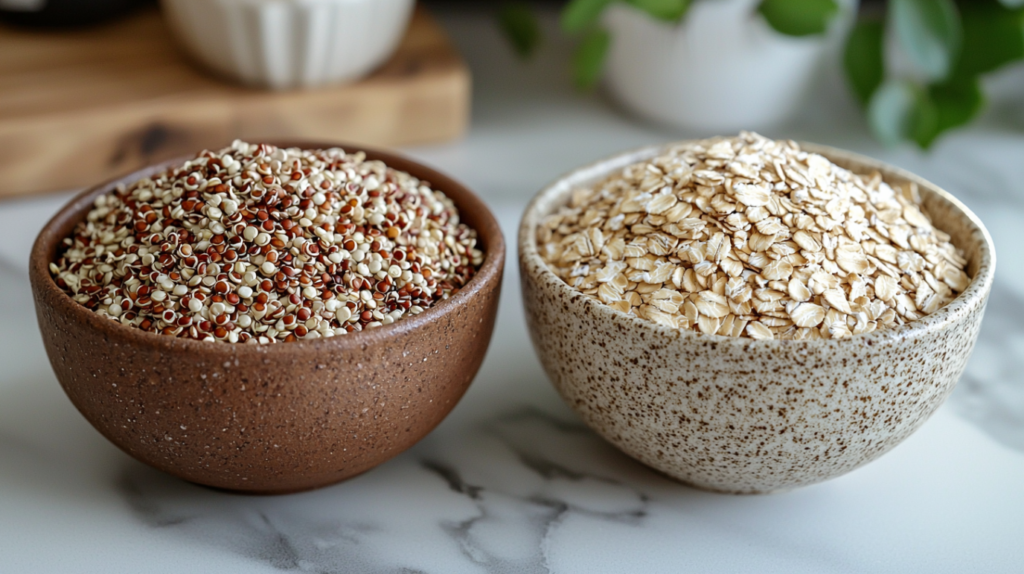
Quinoa and oats may look similar in your bowl, but they come from completely different plants. Quinoa is technically a seed from the Chenopodium plant and is native to South America. It’s often referred to as a “pseudo-grain” due to its grain-like texture. Oats, on the other hand, are true cereal grains that come from the Avena sativa plant, traditionally grown in cooler climates like North America and Europe.
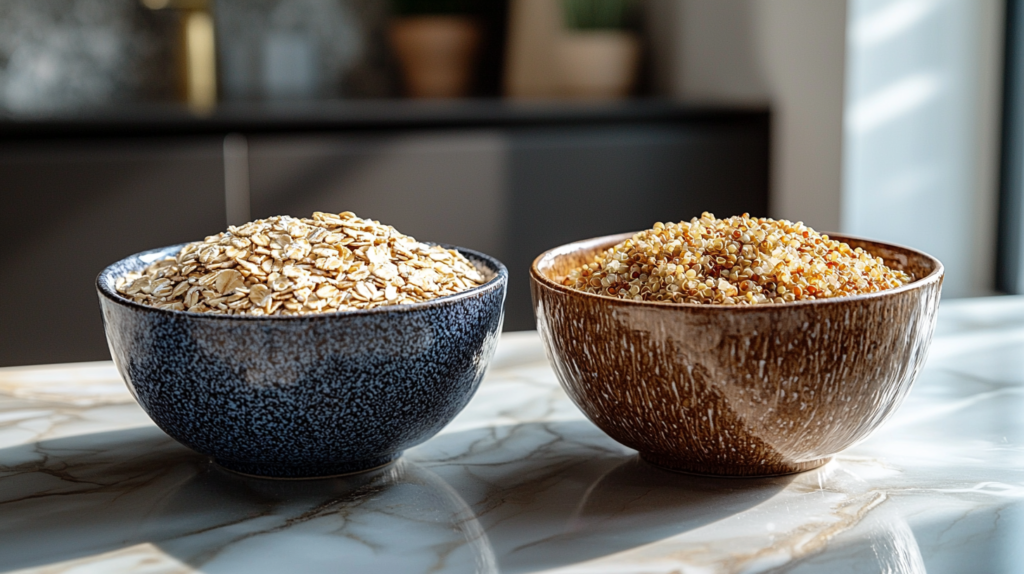
Both oats and quinoa are nutrient-rich, but their profiles differ:
Nutrient | Quinoa(Per 100g) | Oats (Per 100g) |
Protein | 4.4g | 2.4g |
Fiber | 2.8g | 1.7g |
Iron | 1.5mg | 0.9mg |
Gluten-Free | Yes | Naturally gluten-free (can be contaminated during processing) |
Quinoa is a complete protein, containing all nine essential amino acids. It’s also rich in iron, magnesium, and antioxidants. Oats are high in beta-glucan, a special kind of fiber that helps lower cholesterol and supports heart health.
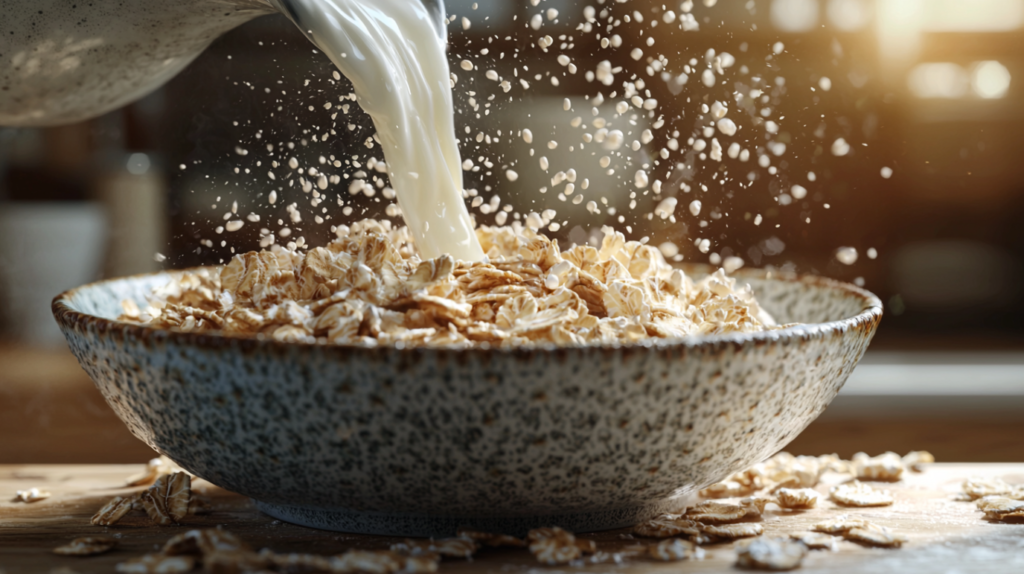
Oats are typically cooked with water or milk to make oatmeal or porridge. They can be quick-cooking, rolled, or steel-cut, depending on texture preferences.
Quinoa, meanwhile, is boiled like rice. Rinse it first to remove its natural bitter coating (saponins), then simmer until fluffy. It’s perfect in salads, bowls, or as a rice alternative.
Oats are excellent for those looking for a filling, heart-healthy breakfast. They’re especially good for people who need slow-releasing carbs, like diabetics or fitness enthusiasts.
Quinoa is ideal for vegetarians, vegans, or anyone needing more plant-based protein. Its low glycemic index also makes it a good option for blood sugar management.
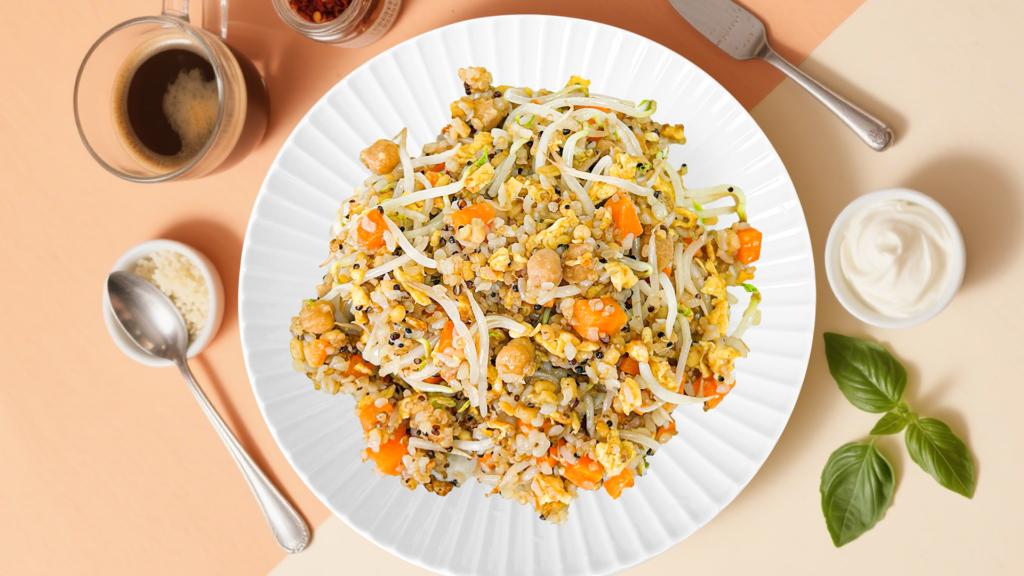
We don’t use a single grain of white rice in our meals. Instead, we use konjac rice—a low-calorie, low-carb alternative—and elevate it with oats and quinoa. This combination brings the best of both worlds: the fiber and heart-healthy benefits of oats, plus the complete protein and minerals from quinoa.
Konjac Oat Rice: A hearty mix of konjac rice, oats, green beans, and chickpeas—perfect for a nutritious meal that keeps you satisfied.
Konjac Quinoa Rice: A lighter, protein-packed blend featuring quinoa, konjac rice, green beans, and chickpeas.
per 100g | Oat instant konjac rice | Quinoa instant konjac rice |
Energy(kJ) | 417KJ | 395kJ |
Protein | 5.07g | 5.38g |
Fat | 1.02g | 0.593g |
Carbohydrate | 12.8g | 12.3g |
Sugar | 0.6g | 0.5g |
Dietary Fiber | 9.43g | 9.04g |
Sodium | 130.5mg | 134.6mg |
These meals are convenient, delicious, and designed to nourish your body—without the blood sugar spikes. Whether you prefer the soft, creamy texture of oats or the light, slightly crunchy feel of quinoa, there’s a bowl for you.
Everyone has different tastes and dietary needs, and that’s exactly why we’ve created these two options. You can choose based on your personal preferences—whether you’re after a more comforting, hearty bite or a protein-rich, lighter experience. Either way, both bowls offer a balanced, low-calorie alternative to traditional rice, perfect for a healthy lifestyle.